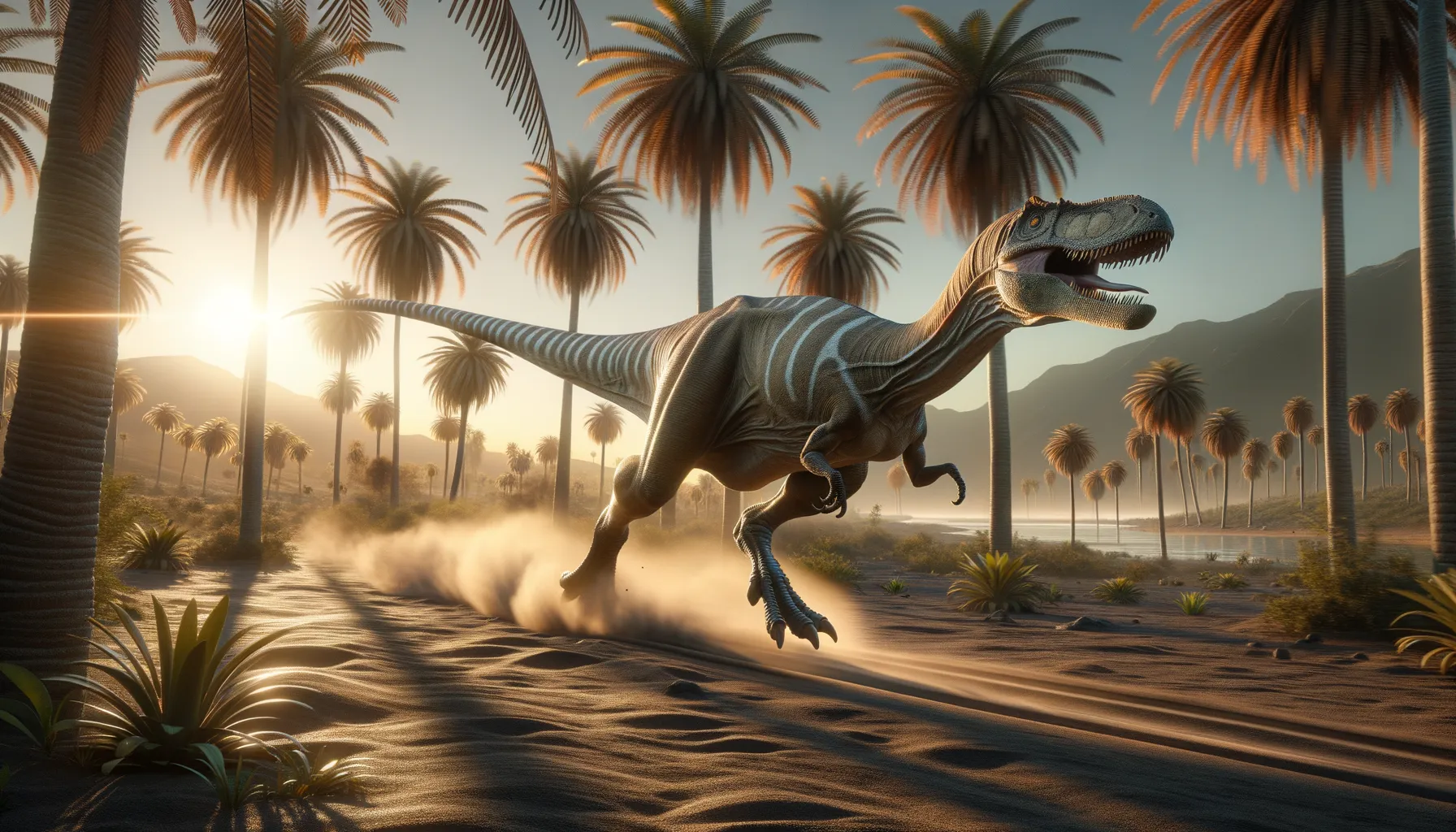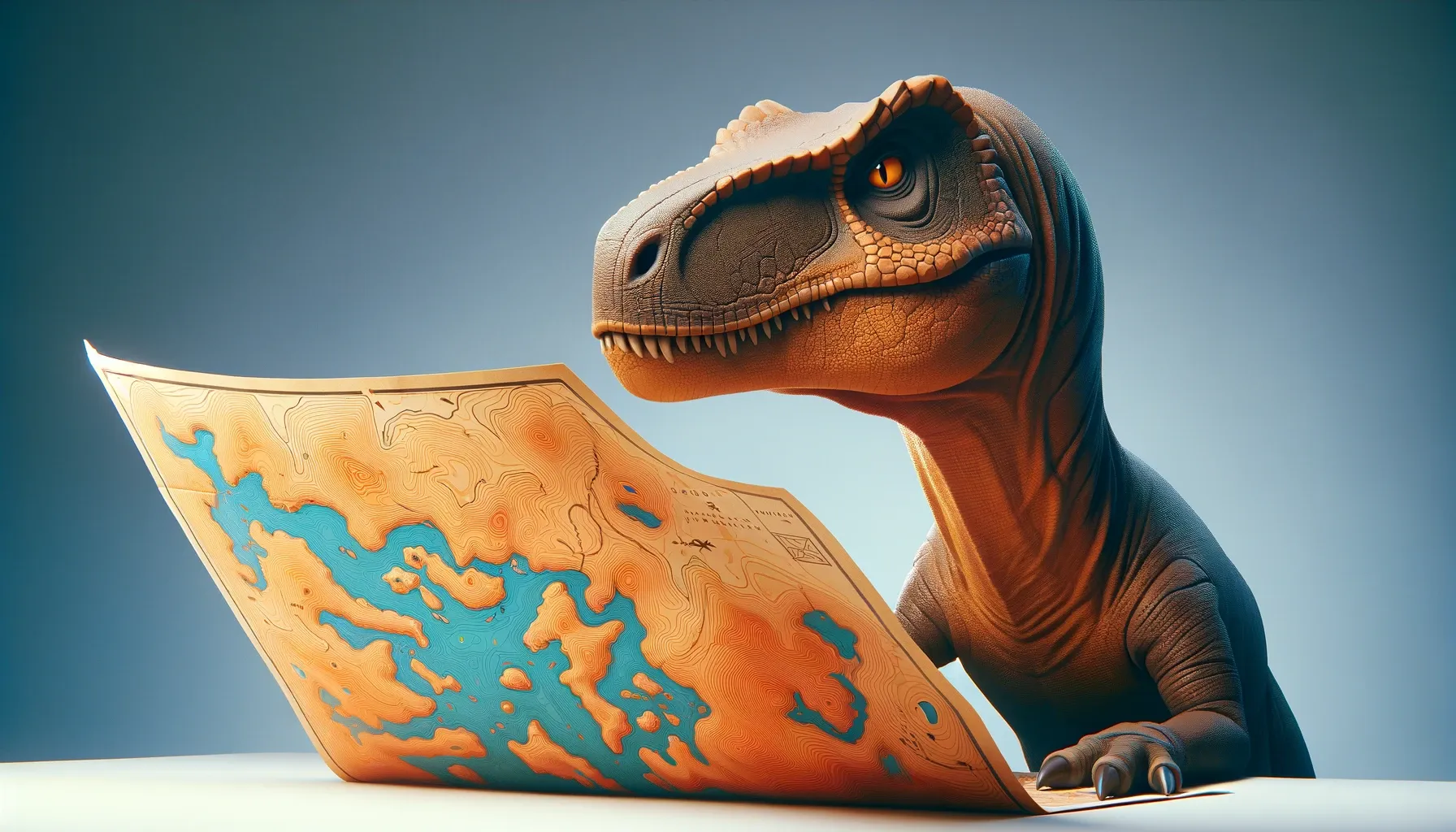
Deltadromeus
Swift predator of the ancient deserts.
Period
Cretaceous
Length
Roughly 26 feet (8 meters) in length.
Height
Approximately 6.5 feet (2 meters) tall at the hips.
Weight
Around 2,200 pounds (1,000 kilograms).
Deltadromeus was a large, predatory dinosaur that lived during the Cretaceous period in what is now Northern Africa. Known for its speed and agility, it likely played a crucial role in its ecosystem as an apex predator. The fossil evidence suggests it had a long, slender build, which contributed to its swiftness. Discovered in 1996, its name means 'delta runner,' reflecting its adaptive prowess in diverse environments.
Diet
Deltadromeus was carnivorous, preying on smaller dinosaurs and possibly scavenging. Its sharp teeth were well-suited for slicing through flesh, and it likely targeted herbivores and smaller prey found in its ecosystem.
Hunting
As a fast runner, Deltadromeus likely used its speed to ambush and capture prey. Its hunting strategy might have included chasing down prey in open areas or utilizing its agility to maneuver through more cluttered environments.
Environmental challenges
Deltadromeus lived in a semi-arid environment, with fluctuating resources and potential competition from other predators. It needed to adapt to changes in food availability and possibly migrate as resources became scarce. The climate was unpredictable, with droughts posing a significant challenge to its survival.
Speed
Deltadromeus was likely a swift runner.
Lifespan
Estimated to live around 20 to 30 years.
First discovery
First discovered in the Kem Kem Beds of Morocco in 1996.
Fun Facts
- Deltadromeus means 'delta runner' because it was believed to have been fast and agile.
- It lived about 95 million years ago during the Late Cretaceous period.
- Deltadromeus fossils were first discovered in the Sahara Desert of Africa.
- It was a carnivorous dinosaur, meaning it ate other animals.
- Deltadromeus is thought to have been about 26 feet long, making it a fairly large predator.
- Although it's called a 'runner', Deltadromeus might have used its speed to catch prey or escape from larger predators.
- The exact relations of Deltadromeus to other dinosaurs are still somewhat of a mystery, keeping paleontologists curious.
Growth and Development
Deltadromeus likely experienced rapid growth during its juvenile stages to outpace predators and achieve a size advantage. This rapid growth phase was crucial for survival in a competitive ecosystem. Once it matured, its growth might have slowed, allowing energy allocation to maintenance and reproduction.
Habitat
Deltadromeus inhabited semi-arid to arid environments, possibly near river deltas or floodplains. These regions provided diverse prey and allowed it to exploit various ecological niches. Seasonal variations likely influenced prey availability and required adaptability to varying conditions.
Interaction with other species
As a top predator, Deltadromeus would have interacted with both prey and rival predators within its ecosystem. This interaction included competition with other carnivores and occasional scavenging. It possibly formed loose associations with others of its kind for cooperative hunting.
Natural lifespan
Deltadromeus’s natural lifespan could extend up to 30 years if it evaded dangers.
Reproduction
Deltadromeus likely laid eggs, similar to other theropods. The reproductive strategy involved laying multiple eggs to ensure that some offspring survived predation. Parental care is uncertain, but nests were likely concealed to protect against egg-stealing predators.
Social behaviour
Deltadromeus might have exhibited solitary behavior, typical of many large predators. However, temporary groupings for hunting efficiency or mate attraction are possible. Communication among individuals could have included vocalizations or visual displays during the mating season.
Fossil locations
Fossils of Deltadromeus have been primarily found in the Kem Kem Beds of Morocco. This area is renowned for its rich deposits of Cretaceous-era fossils, offering insights into diverse dinosaur species. Further searches may reveal more locations, expanding our understanding of its range.
